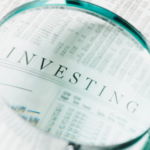Today, we examine the projected compounded annual growth rate for the markets this century. And with the help of Warren Buffett, we'll see why your money manager might be projecting that pigs will fly.
Fees for providing a value-added service we can all agree upon. But what would you think of a money manager who charged a 1% fee upfront to invest your capital, 2% administration management fee and invested your money in a fund that charged another 1% fee? Even Warren Buffett didn't think of such egregious charges when he penned this gem in 2007.
“It will come as no surprise that many companies continue to choose an assumption that allows them to report less-than-solid “earnings.” For the 363 companies in the S&P that have pension plans, this assumption in 2006 averaged 8%. Let’s look at the chances of that being achieved.
The average holdings of bonds and cash for all pension funds is about 28%, and on these assets returns can be expected to be no more than 5%. Higher yields, of course, are obtainable but they carry with them a risk of commensurate (or greater) loss.
This means that the remaining 72% of assets – which are mostly in equities, either held directly or through vehicles such as hedge funds or private-equity investments – must earn 9.2% in order for the fund overall to achieve the postulated 8%. And that return must be delivered after all fees, which are now far higher than they have ever been.
How realistic is this expectation? Let’s revisit some data I mentioned two years ago: During the 20th Century, the Dow advanced from 66 to 11,497. This gain, though it appears huge, shrinks to 5.3% when compounded annually. An investor who owned the Dow throughout the century would also have received generous dividends for much of the period, but only about 2% or so in the final years. It was a wonderful century.
Think now about this century. For investors to merely match that 5.3% market-value gain, the Dow – recently below 13,000 – would need to close at about 2,000,000 on December 31, 2099. We are now eight years into this century, and we have racked up less than 2,000 of the 1,988,000 Dow points the market needed to travel in this hundred years to equal the 5.3% of the last.
It’s amusing that commentators regularly hyperventilate at the prospect of the Dow crossing an even number of thousands, such as 14,000 or 15,000. If they keep reacting that way, a 5.3% annual gain for the century will mean they experience at least 1,986 seizures during the next 92 years. While anything is possible, does anyone really believe this is the most likely outcome?
Dividends continue to run about 2%. Even if stocks were to average the 5.3% annual appreciation of the 1900s, the equity portion of plan assets – allowing for expenses of .5% – would produce no more than 7% or so. And .5% may well understate costs, given the presence of layers of consultants and high-priced managers (“helpers”).
Naturally, everyone expects to be above average. And those helpers – bless their hearts – will certainly encourage their clients in this belief. But, as a class, the helper-aided group must be below average. The reason is simple: 1) Investors, overall, will necessarily earn an average return, minus costs they incur; 2) Passive and index investors, through their very inactivity, will earn that average minus costs that are very low; 3) With that group earning average returns, so must the remaining group – the active investors. But this group will incur high transaction, management, and advisory costs. Therefore, the active investors will have their returns diminished by a far greater percentage than will their inactive brethren. That means that the passive group – the “know-nothings” – must win.
I should mention that people who expect to earn 10% annually from equities during this century – envisioning that 2% of that will come from dividends and 8% from price appreciation – are implicitly forecasting a level of about 24,000,000 on the Dow by 2100. If your adviser talks to you about double-digit returns from equities, explain this math to him – not that it will faze him. Many helpers are apparently direct descendants of the queen in Alice in Wonderland, who said: “Why, sometimes I’ve believed as many as six impossible things before breakfast.” Beware the glib helper who fills your head with fantasies while he fills his pockets with fees.”
Related Posts
Also on Market Tamer…
Follow Us on Facebook

 The 9 Best Stocks to Buy for 2025
The 9 Best Stocks to Buy for 2025



